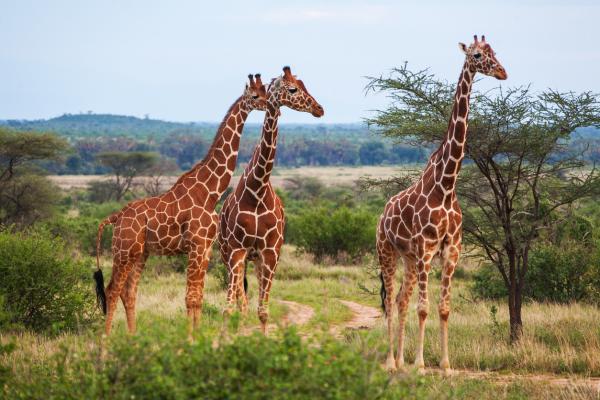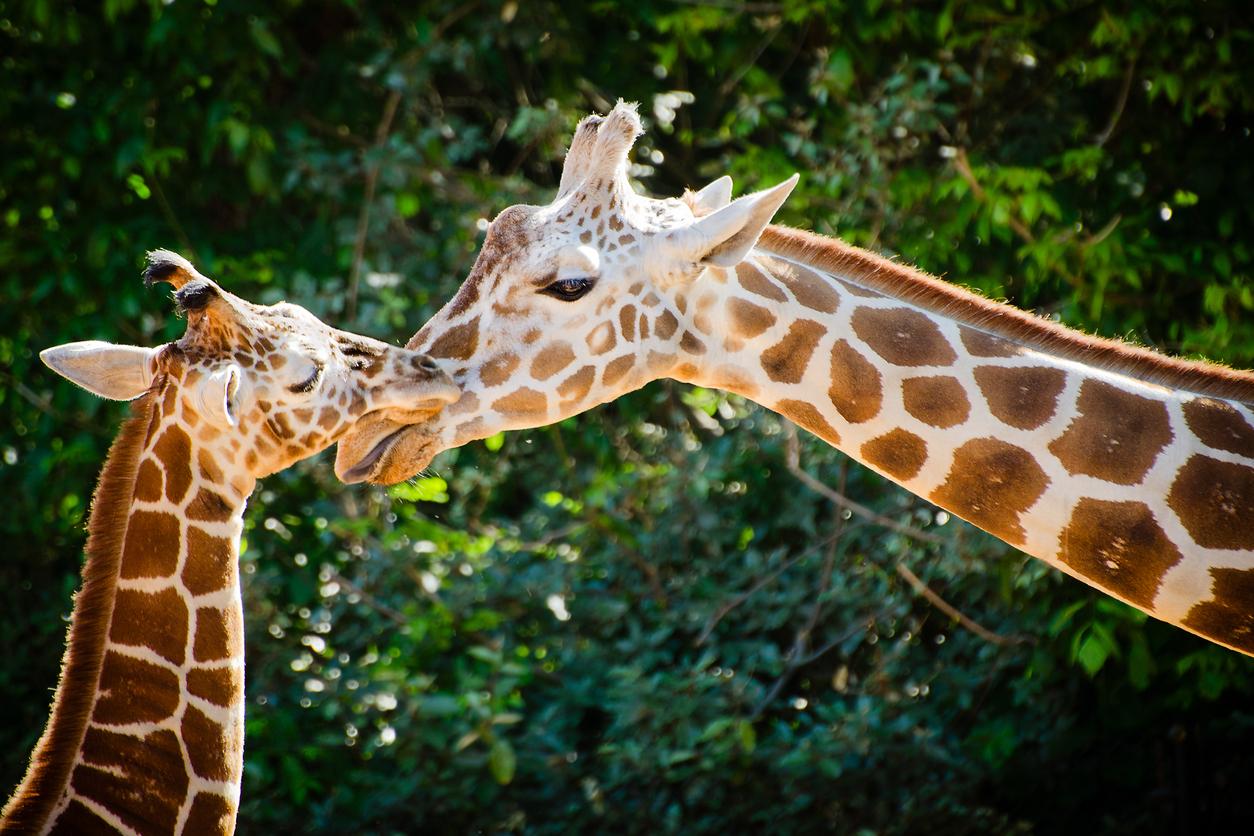Where Do Giraffes Live in the World?


Giraffes reside in savannas, open woodlands or grasslands. This is because those areas are rich in acacia growth. Acacia is a genus of shrubs and trees which giraffes feed on, forming the largest part of their staple diet. Giraffes are mostly found in East Africa and Southwestern Africa, especially Angola and Zambia. Until the middle of the 20th century, giraffes were commonly found in West Africa, to the south of the Sahara. As habitat destruction has occurred, the population of giraffe in this area has become fragmented and the different giraffe species have become vulnerable.
Are you wondering where do giraffes live in the world? AnimalWised provides the answer by looking in more detail at giraffe habitat and distribution.
Do giraffes live in Africa?
Giraffes run wild in the grasslands of the open planes of Sub-Saharan Africa. They also survive in woodlands and savannas, but in general these animals will move to areas which are plentiful in food.
Giraffe habitat comprises dry open woodlands, savannas, and other regions where vegetation and foliage are relatively dense. Giraffes feed on mimosas and apricot leaves besides the acacia. Treeless grasslands with less flora are not suited as a habitat for the giraffe.
However, it is commonly assumed that giraffes live in dense forests because they must be feeding on tree leaves high up. In fact, this is not so. Giraffes are extremely tall, so they need a lot of room to maneuver.
There are eleven different giraffe species and subspecies, and of course they inhabit different regions:
- Northern giraffe (Giraffa camelopardalis): Cameroon, Central African Republic, Chad, Congo, Ethiopia, Kenya, Niger, South Sudan and Uganda.
- Reticulated giraffe (Giraffa reticulata): Kenya, Ethiopia and Somalia.
- Southern giraffe (Giraffa giraffa): Botswana, Mozambique, Namibia, South Africa, Zambia, Zimbabwe.
- Masai giraffe (Giraffa tippelskirchi): Kenya, Tanzania and Zambia.
Giraffe habitat loss
The necessary home range for a giraffe is between eight and fifty square miles. Areas of the habitat for giraffes overlap with that of humans. The result of this is that their natural habitat will shrink further due to humans making roads and clearings. The home range for the giraffes is therefore decreasing.
Because of their shrinking habitat, giraffes are pushed back to the same areas for feeding before there is a chance for food sources to replenish. Many habitats around Africa where giraffes are protected from humans have been converted into wildlife safaris. This reduction in habitat is one of the main reasons giraffes are now considered a vulnerable species.

Do giraffes live in hot places?
Giraffes thrive in areas where the temperature is high. Enjoying wide spaces that allow them to see at a large distance, giraffes graze for food in a gradual way, although they can also move quickly if they require.
One of the biggest threats for the giraffe is the rinderpest, also called the cattle plague. This virus affects bovids like cattle and buffaloes, but also giraffes which have had entire herds wiped out by it.
Learn more about different types of buffalo and bison in our related article.
Is the giraffe population decreasing?
Giraffes existed throughout Africa once. Nowadays it occurs in the wild in specific, fragmented regions of the continent from Mali to northern South Africa. The most worrying thing is that giraffe populations are far smaller than they used to be. Herds are becoming smaller in number too. Herds once comprised 100 animals, whereas now they range from 2-10.
Has the distribution of giraffes changed?
Excessive poaching, hunting and climate change has also caused changes in the distribution and number of giraffes in historical time, not only recent habitat destruction. Giraffes disappeared in Egypt around 2600 BCE, although they survived in Morocco till 600 CE.
The present situation is such that parts of western and southern Africa are home to the largest numbers of giraffes. The largest populations of giraffes are currently found in Tanzania and surrounding areas. Even there, the local giraffe - the West African or Niger giraffe (Giraffa camelopardalis peralta) is classified as endangered by the IUCN in Western Africa.
Do giraffes live in herds?
Giraffes move around rivers and waterholes in the summer season when it is dry. They do so in family herds. During the rains, they can be found moving into deciduous woodlands. The giraffes' migration covers a range of around 20 to 30 km. The availability of water is crucial for their survival, but they can look for it for weeks without becoming dehydrated.
Giraffes are active during the night and cooler times, and they rest during the hot day. But another fascinating fact is that they sleep less than 2 hours in a day!

What is a giraffe's habitat like?
As we pointed out above, giraffes live in Sub-Saharan Africa from Niger to Zimbabwe and Botswana. The largest concentration is in central-east Africa, mostly Tanzania and Kenya.
The ecosystem in which giraffes can be found is the savanna. The African savanna is a rolling grassland that has high temperatures throughout the year. During the dry months, the temperature is around 70º F (21º C) to around 85º F (29.5º C) in the wet season. With a hot, humid and wet season from May to November with fifteen to twenty-five inches of rain per month, the African savanna provides nutrition to wild herds of giraffes and more.
Savannas are midway between tropical rain forests and deserts. The climate is, therefore, a blend of both – too dry for woodlands but wet enough to sustain vegetation. The African savanna is like arid Colorado in the dry season; giraffes can go without water for a while, but trees need hydration to survive.
The Giraffe Conservation Foundation (GCF) has estimated that 80,000 giraffes exist in the wild, which is half the numbers in 1999 when the IUCN estimated their population to be over 140,000.
Poaching, human growth and development, urban encroachment and loss of habitat to degradation are the reasons behind the loss of the giraffe's habitat. The world's tallest animal is falling short in numbers!
Where do giraffes live, then? Now that you know the answer, tell us what you like about them in the comments section and don't miss the following articles:
If you want to read similar articles to Where Do Giraffes Live in the World?, we recommend you visit our Facts about the animal kingdom category.







